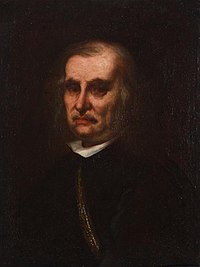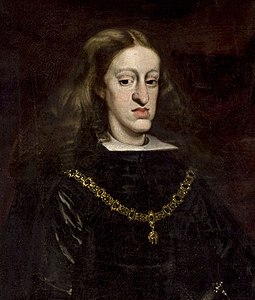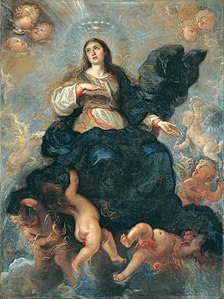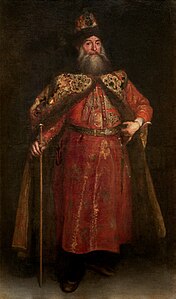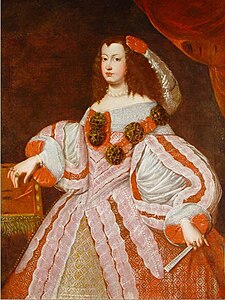
Diego Rodríguez de Silva y Velázquez, Knight of the Order of Santiago was a Spanish painter, the leading artist in the court of King Philip IV of Spain and Portugal, and of the Spanish Golden Age.

Francisco Pacheco del Río was a Spanish painter, best known as the teacher and father-in-law of Diego Velázquez and Alonzo Cano, and for his textbook on painting, entitled Art of Painting, that is an important source for the study of 17th-century practice in Spain. He is described by some as the "Vasari of Seville": vocal and didactic about his theories of painting and thoughts about painters, conventional and uninspired in his executions.

Claudio Coello was a Spanish Baroque painter. Coello is considered the last great Spanish painter of the 17th century.

Juan de Pareja was a Spanish painter of multiracial descent. Born in Antequera, he is best known as a member of the household and workshop of painter Diego Velázquez, who enslaved Pareja until 1654. Pareja's 1661 painting The Calling of Saint Matthew is currently on display at the Museo del Prado in Madrid.

Spanish art has been an important contributor to Western art and Spain has produced many famous and influential artists including Velázquez, Goya and Picasso. Spanish art was particularly influenced by France and Italy during the Baroque and Neoclassical periods, but Spanish art has often had very distinctive characteristics, partly explained by the Moorish heritage in Spain, and through the political and cultural climate in Spain during the Counter-Reformation and the subsequent eclipse of Spanish power under the Bourbon dynasty.

Juan Bautista Martínez del Mazo was a Spanish Baroque portrait and landscape painter, the most distinguished of the followers of his father-in-law Velázquez, whose style he imitated more closely than did any other artist. A fine painter himself, Mazo was a master of landscape, as proven by his most celebrated work View of Saragossa.

The Portrait of Juan de Pareja is a painting by Spanish artist Diego Velázquez of the enslaved Juan de Pareja, a notable painter in his own right, who was owned by Velázquez at the time the painting was completed. Velázquez painted the portrait in Rome, while traveling in Italy, in 1650. It is the earliest known portrait of a Spanish man of African descent.

Gaspar de Guzmán, Count-Duke of Olivares, on Horseback is an oil on canvas painting by Spanish painter Diego Velázquez, made around the year 1636. It has been in the Museo del Prado in Madrid since its inauguration in 1819.
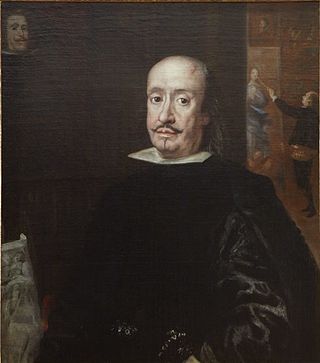
Francisco Rizi, or Francisco Ricci de Guevara was a Spanish painter of Italian ancestry.
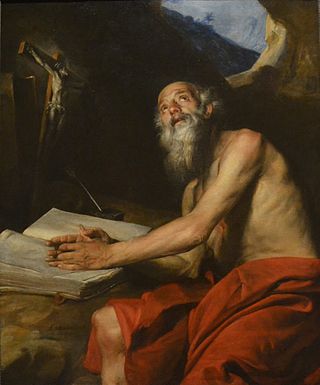
Juan Martín Cabezalero was a Spanish Baroque painter.
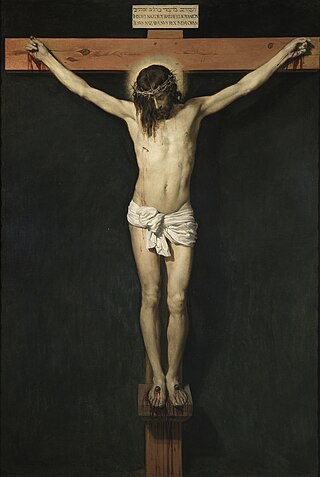
Christ Crucified is a 1632 painting by Diego Velázquez depicting the Crucifixion of Jesus. The work, painted in oil on canvas, measures 249 × 170 cm and is owned by the Museo del Prado.

Portrait of Don Luis de Góngora is a 1622 painting in oils of the poet Luis de Góngora by Diego Velázquez. It is influenced by Caravaggio, especially in its chiaroscuro, and also applies lessons Velazquez had learned in Italy, such as the rich palette as used by Titian. It is now in the Museum of Fine Arts, Boston. The portrait was commissioned with the assistance of Velázquez's teacher, Francisco Pacheco.

Doña Antonia de Ipeñarrieta y Galdós and Her Son Don Luis is a 1634 portrait by Diego Velázquez, now in the Prado Museum. Doña Antonia and her son Luis are shown standing, captured in an elegant melancholy. The woman uses the chair to support herself, to emphasize her social status in the Court, where she had the right to sit. According to different studies of the canvas, it is believed that the child's figure could have been added afterwards.
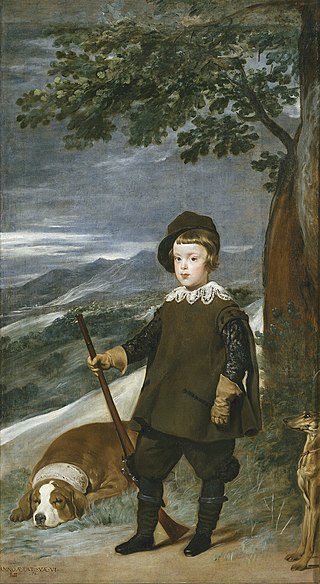
Prince Balthasar Charles as a Hunter is a 1635 portrait of Balthasar Charles, Prince of Asturias by Diego Velázquez. It is now held at the Museo del Prado.
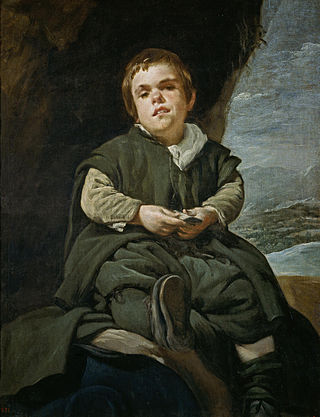
Portrait of Francisco Lezcano or The "Niño de Vallecas" is the 1645 portrait by Diego Velázquez of Francisco Lezcano, also known as Lezcanillo or el Vizcaíno, a jester at the court of Philip IV of Spain. It has been in the Prado since 1819.

Portrait of Pablo de Valladolid is a portrait painted around 1635 by Diego Velázquez of Pablo or "Pablillos" de Valladolid (1587–1648), a jester and actor at Philip IV's court from 1632 until his death. It is now in the Museo del Prado, to which it was moved in 1827.

The Portrait of Sebastián de Morra is a painting by Diego Velázquez of Sebastián de Morra, a court dwarf and jester at the court of Philip IV of Spain. It was painted around 1644 and is now in the Prado in Madrid. Not much is documented about De Morra's life, other than the fact that he was brought to Spain by Philip IV in 1643 and served the court for six years before his death in 1649. It was not until Velázquez became a court painter that he showed dwarfs with a warmer and naturalistic style compared to previous paintings. De Morra looks directly at the viewer, motionless, making no hand gestures, leading one critic to suggest that the painting represents a denunciation of the court's treatment of de Morra and other dwarfs. Recently discovered inventories and previous documents relating to De Morra reveal that he was also known by a nickname, El Primo.

The Equestrian Portrait of Margarita of Austria is a 1634 portrait of Margaret of Austria, Queen of Spain on horseback by Velázquez, originally shown at the Hall of Realms of the Buen Retiro Palace in Madrid and now in the Prado Museum.
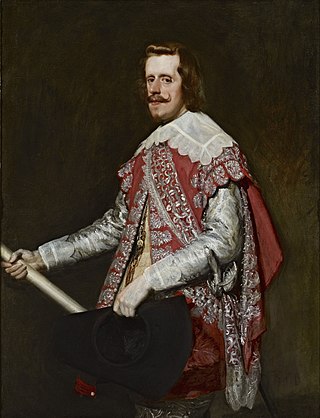
The Portrait of Philip IV in Fraga is a mid-length portrait of Philip IV of Spain by Velázquez. It was painted over the course of three sessions in June 1644 in Fraga, where Philip IV had moved the royal court as part of the "Jornada de Aragón" which resulted in the recovery of Lérida from France, which had occupied the city earlier during the Reapers' War. The portrait was gifted by Philip V to his son, the future Philip, Duke of Parma, and the painting left Spain along with him in 1748. In 1911 it was acquired by the Frick Collection, where it is currently on display.

The Spanish royal collection of art was almost entirely built up by the monarchs of the Habsburg family who ruled Spain from 1516 to 1700, and then the Bourbons. They included a number of kings with a serious interest in the arts, who were patrons of a series of major artists: Charles V and Philip II were patrons of Titian, Philip IV appointed Velázquez as court painter, and Goya had a similar role at the court of Charles IV.
